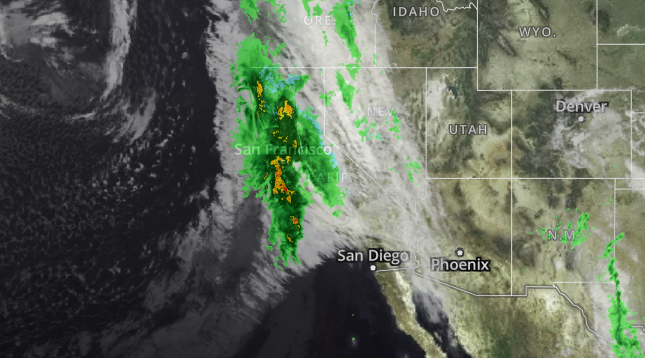We hear the term often in California, what exactly is an atmospheric river?
An atmospheric river is basically a conveyor belt of moisture from the Pacific Ocean — and while they’re not on land like typical rivers, they do contain enough water to be classified as rivers, U.S. Geological Survey explains.
Technically, an atmospheric river is a channel of water vapor that gets picked up near Hawaii, then transported by atmospheric wind directly into the West.
You might’ve heard the phrase, “Pineapple Express,” which is another, unscientific term.

Once they meet land, atmospheric river moisture is released, then lifted higher into the atmosphere where it develops into heavy rain/snow. This is particularly evident in mountainous areas of the west. Parts of the Sierra Nevada mountain range receive 30-50% of their annual precipitation from ARs.
The National Weather Service’s forecaster/meteorologist William Churchill told The New York Times that while California can usually benefit from the extra precipitation, “too much all at once” creates risk in areas damaged by wildfires. Here, scorched debris creates the possibility of mudslides, according to Churchill.

While the term “atmospheric river” might be new to many, the phenomenon’s effect on the weather is pretty constant: There’s always one happening somewhere across the globe, USGS explains.












